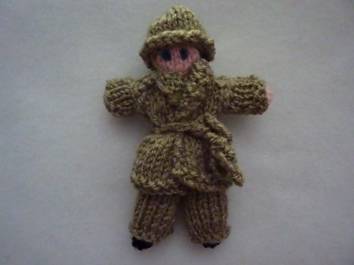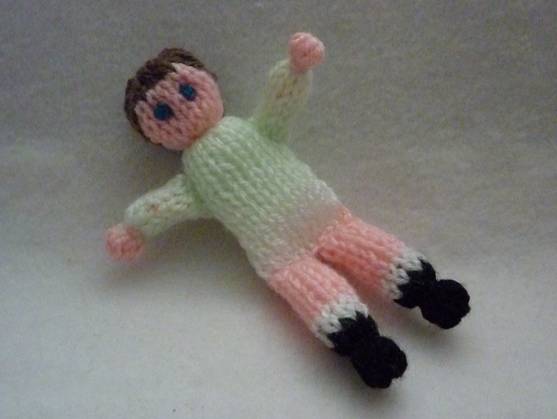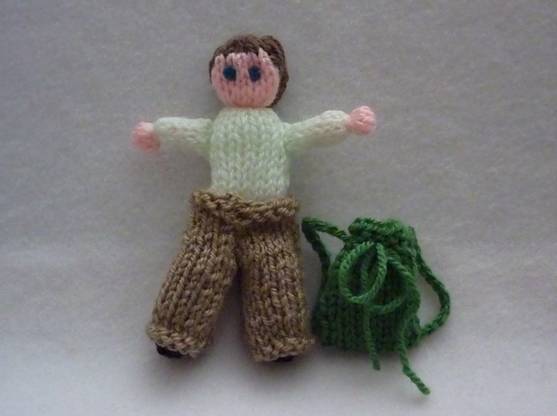
Salty Sam’s Fun Blog for Children
Number 493
Summer Projects
Hello Everyone

Every summer, Miss Pringle at the Rocky Bay Primary School likes to give her pupils something fun and interesting to do over the summer holidays.
Last summer, she gave them a huge list of things that they could do that would help them in their endeavours to learn and do well at school.
lt really was a very long list. But the children had plenty of choice. They didn’t have to do everything on the list.
This summer, she wanted to focus more on useful life skills.
This time she said that it would be a good idea for the children to do everything on this list. They might well have to learn how to do the things on the list sooner or later anyway.
ln fact, a lot of the tasks listed, they may already be able to do already. So that would be great.
Miss Pringle thought she might teach the children a few things and then they could get some practice in their own time.
She said that sometimes even adults have to learn how to do some of these things.
Firstly, she wrote a list up on the board and divided the children into brainstorming groups to talk about what they already knew so that they could exchange ideas.
Then she wrote their ideas up on the board and added her own.
lf you want to play along with Miss Pringle’s class, read her list and see how many points you can say or write down about it.
This is Miss Pringle’s list…
- How to shake hands with someone and introduce yourself
- How to read a passage in front of other people
- How to notice when someone near you needs help of some kind
- How to make a genuine apology when you are in the wrong
- How to write a thank you note
- How to take a message
- How to find a book in a library
- How to set a table
- How to hang a picture
- How to bath a baby
- How to swap from drinking sugary drinks to drinking water
- How to take a really deep breath when you are stressed
- How to meditate
- How to limit your screen time
- How to celebrate small wins to encourage yourself to work harder
They spent the rest of the lesson practising what they had learnt.
When they were shaking hands and introducing themselves to the other children in the class there was a lot of giggling and not taking the exercise seriously.
Miss Pringle said that she was sure the children would behave better when they met a stranger in a real situation not just a pretend one.
After the break and some running around in the fresh air and a drink of water, the children came back into the classroom to discuss what they had learnt and experienced.
They talked about what they had found easy and what they had found difficult.
They talked about what they had found really interesting and what they wanted to practice more of over the summer holidays.
Bill, Bob, Henry and Emily knew they were going to spend their holidays together so they knew who they were going to practice with!
lf you like my blog, please support it by telling all your friends and followers about it.
Thank you!
And see you again next Fun Friday!
Love and kisses
Salty Sam

www.christina-sinclair.com

![]()
Bill and Bob’s Joke of the Week![]()
![]()
Bob: So what did you learn at school today Bill?
Bill: l don’t think l learnt enough. They say l have to go back again tomorrow.
Bob: Ha-ha-ha!
l know how to get straight ‘A’s at school.
Bill: Yes, so do l – use a ruler.

Salty Sam © Christina Sinclair 2015
Unauthorized use and/or duplication of material from this blog without express and written permission from this blog’s author and owner is strictly prohibited.
Links may be used to www.christina-sinclair.com

Picture Gallery


Meditation – Imagine these coloured lights inside your body
![]()

 THE SALTY SAM NEWS DESK
THE SALTY SAM NEWS DESK


I am sure that you want to compare the finished list on Miss Pringle’s whiteboard with your own so here it is…
How to shake hands with someone and introduce yourself
ln most cultures in the world it is polite to look someone in the eye when you meet them.
Shake hands with a strong grip, not a limp one. Don’t hold onto someone else’s hand for too long.
Tell them your name so that they know who you are. You may also need to tell them why you are in a place or what you need from them – it all depends on the situation. But in any case you have to communicate clearly so that they understand what you are saying to them.
When they tell you their name, you must remember it and use it if you can to show them that you are keen to connect with them. Saying it out loud will help you to remember it. Just saying something like, “Hello John, it is nice to meet you” will help you a lot.
How to read a passage in front of other people
Don’t be shy; shine out instead.
Practise the passage at home first, if you can.
Mark the place in your book you want to read from with a sticky note, if you can.
A bookmark might fall out if you are nervous and fumbling with pages. If you can’t find the right place when everyone is waiting for you, you will get even more nervous and that will not be a good start for you.
Make sure you speak clearly and slowly enough to pronounce all your words properly. If you talk to the people at the back of your audience, everyone in front of them should be able to hear you.
Look up from time to time to connect with your audience – but don’t lose your place when you do so.
Feel like you are taking your voice from your chest not your throat. This is what actors in the theatre do when they don’t have microphones to use.
Your voice is a muscle and will grow stronger the more you use it at a high volume.
How to notice when someone near you needs help of some kind
Just keep your wits about you. Be polite enough to step out of the way if you are blocking a pavement or shop aisle when someone wants to get through. It might be very helpful to someone with their arms full or carrying something very heavy or pushing a buggy to open the door for them. Don’t wait to be told.
If you see someone is overtired and stressed it might be helpful to do a little job for them to help them out – or at least don’t do anything to make things worse.
If your mum comes home from work very tired and she opens the front door to see bags and shoes and books all over the floor – trust me she will feel more stressed than ever.
You don’t see the mess, but she does, and it is very upsetting to working mums to come home to a messy house.
How to make a genuine apology when you are in the wrong
This will help you and your relationships with other people. You might want to say why you realize that you were wrong and how you won’t do it again.
How to write a thank you note
Just saying thank you in a note is a really nice thing to do.
It shows the person who gave you something that you really appreciated the fact they gave you a present.
You could add why you liked the present and what you are going to do with it just to show extra thought.
How to take a message
The important thing is to listen very carefully to everything that is said to you, decide on what the most important points are to remember and then explain this information very clearly to somebody else. You may not need to repeat every single word that was said to you.
How to find a book in a library
A library can be divided up into different sections.
There may be books and other things like computers and toys.
The books might be divided into reference, fiction, non-fiction and children’s books.
Reference books cannot be taken home. They may be atlases, dictionaries or books about the law. They might have useful information that you can write down on a piece of paper and then take your notebook home instead.
Fiction means story books and non-fiction is books about things like hobbies, science and history.
The books will be sorted into sections in each area.
There will be labels on the book shelves or wall to help you.
There may be labels on the spines of the books as well.
If you are really stuck, ask the librarian for help. Explain clearly what it is you are looking for. Make a note of the name of a book or the information you require on a piece of paper or phone before you leave home.
How to set a table
Some people use a table cloth and some people use place mats on a dining table.
You need to put a plate down for each person or leave enough space for one. You might also have a small plate at the side for bread.
The fork goes on the left and the knife goes on the right. The spoon or fork for dessert goes at the top.
If you have more than one course, you use the cutlery working in from the outside.
You may want to put other things on the table as well like glasses, flowers, napkins and small presents on special occasions.
How to hang a picture
Nowadays, you don’t have to even hammer a nail or screw a screw into the wall. You can use a sticky hook that can hold quite a lot of weight and it won’t even mark the wall when you remove it.
If you want to put a collection of pictures on the wall, lay them on a table first to see how you want to group them.
You might want to put together a theme of subjects or colours. You may want to put up a collection of family photographs or even your own needlework or paintings.
Measure the wall before you arrange your pictures – you want to make sure you have enough space for them all.
Draw around your pictures onto brown paper or old wrapping paper and tape or sticky tack these pieces of paper onto the wall where you want your pictures to hang and mark with a pencil where to place your hanging hook. You must use the kind of tape that will not pull off paint or paper.
Step back and look at a picture to see if the top is level. If it looks level to the eye that is enough – you will not need a spirit level for the top of the picture but you might want to use one to position the hooks. Put a tiny pencil mark on the wall to see where you want to put your hook.
It is amazing how much a picture looks upgraded when it is in a frame. You can put a collection of things in a deep frame/shadow box instead.
How to bath a baby
It is best to bath a baby in a bath smaller than an adult bath. You need to have a good hold of the baby and make sure its head it well supported above the water. This isn’t so easy to do in a big bath.
Always test the water with your bare elbow to make sure the water is warm enough but not too hot.
Make sure you have everything you need to hand before you start.
You will want to just reach out for everything. You can’t leave the baby unattended in the water to wander off to find anything you might have forgotten!
Start with a towel to put the baby in when you have finished and line up all the soap, lotions and talc as well.
Have a chair nearby so that you can sit down if you want to hold the baby on your lap.
Watch someone else doing the job before you attempt to do it yourself and have an adult looking over everything you do.
Of course, you can practice all of this with a doll.
How to swap from drinking sugary drinks to drinking water
You can do this slowly bit by bit or suddenly. You will get used to going without sugary drinks in only a few days; and then have them just once in a while if you think they are a special treat.
How to take a really deep breath when you are stressed
Take air into your lungs and down as far as it will go – so that your stomach/belly goes out – even though actually your lungs are more towards your back than your front.
How to meditate
Start off by doing it for a short time and start with something really easy.
Sit and watch the second hand go around a clock for two minutes. Think of nothing else but watching the hand go round. Keep your thoughts at bay.
Did you find that easy or difficult?
It is often said that when people say that they do not have time to meditate, they are the ones who need it the most.
When you are going through a really bad time of stress, meditating will help your mental and physical health. If you already know how to do it, it will be much easier for you to just click into doing it.
Trying to learn how to do it in a time of stress is not so easy.
How to limit your screen time
If you think you use your devices too much, there are several things you can do.
- Start looking at them later in the day so there isn’t as much time left for you to be on them
- Make sure that you find other things to do that you really like such as playing on your trampoline and go outside to play leaving them behind in the house
- Set a timer
- Start at a time before your favourite television show begins or your yummy dinner is due to be served up and you will be tempted to drag yourself away
- Don’t take your phone into your bedroom at night
How to celebrate small wins to encourage yourself to work harder
We all have things that we have to do but don’t really want to.
If we tell ourselves there is a treat waiting for us when we have accomplished something that is hard to do, it can spur us on to get on with it.
Self-discipline is a good attribute to have!


NEWSDESK MINIMAKE
POSTCARD LABELS
If you are going away on holiday this year, you may be planning to send postcards home to your family and friends.
Instead of taking an address book to remind you of their addresses, you could pre-address some labels and just simply stick them on cards you buy on holiday. You can print them out or write them out in your best handwriting.
It will save you a lot of time when you get on holiday – that you can spend playing on the beach!



*********************
TO ADVERTISE ON THIS BLOG
PLEASE CONTACT:
christina.sinclair.ads@aol.co.uk
*********************

 Quick Quiz
Quick Quiz
What do these idioms mean?
- stormy waters
- making waves
- a tide of opinion
- there is more trouble at sea
- the tide is turning
- to be left high and dry
- the tide is turning
- a drop in the ocean
- a sea change
- all at sea



![]()
lt’s the Weekend!

HOW TO MAKE A LlTTLE KNlTTED EXPLORER
If you are not going away on holiday this year, here is a little explorer that you can take on expeditions in a garden or park.
He has a nice safari jacket to keep him warm if he needs to climb up any mountains or spend the night in a desert.
He has a water bottle to carry and a back pack to pack away provisions and a clean pair of socks.
His top is pale green but you can use any colour you like. His face is suntanned-pink but you can use any colour you like.
You will need tan or pale brown yarn for his jacket and trousers.
Of course, you can always make him a friend or two to go along on his adventures with him.
Use over-sew stitching to sew all the pieces together

FRONT (KNIT ONE)
Using 4mm knitting needles and white dk yarn cast on 10 stitches
Knit 4 rows of stocking stitch
Change to light green dk yarn
Knit 10 rows of stocking stitch
Change to pink dk yarn
Knit 6 rows of stocking stitch
Change to brown dk yarn
Knit 2 rows of stocking stitch
Don’t cast off – leave a length of yarn for sewing up when you cut off your yarn and leave your stitches on this yarn
BACK (KNIT ONE)
Using 4mm knitting needles and white dk yarn cast on 10 stitches
Knit 4 rows of stocking stitch
Change to light green dk yarn
Knit 10 rows of stocking stitch
Change to brown dk yarn
Knit 8 rows of stocking stitch
Don’t cast off – leave a length of yarn for sewing up when you cut off your yarn and leave your stitches on this yarn
LEGS (KNIT TWO)
Using 4mm knitting needles and pink dk yarn cast on 10 stitches
Knit 6 rows of stocking stitch
Change to white dk yarn
Knit 2 rows of stocking stitch
Change to black dk yarn
Knit 4 rows of stocking stitch
Don’t cast off – leave a length of yarn for sewing up when you cut off your yarn and leave your stitches on this yarn
ARMS (KNIT TWO)
Using 4mm knitting needles and light green dk yarn cast on 8 stitches
Knit 6 rows of stocking stitch
Change to pink dk yarn
Knit 2 rows of stocking stitch
Don’t cast off – leave a length of yarn for sewing up when you cut off your yarn and leave your stitches on this yarn
TO MAKE UP
- Using over-sew stitching and with right sides together sew side seams of head and body and also the arms and legs using appropriate colours
- Turn right sides out and pull tops of head, feet and hands in tight
- Stuff the body and legs with some stuffing and the ends of the yarn
- Stuff the arms with the ends of the yarn
- Bind a length of pink yarn around the neck and pull in tight then secure ends and push inside the stuffing
- Bind a length of pink yarn around the wrists and pull in tight then secure ends and push inside the arms
- Bind a length of black yarn around the ankles and pull in tight then secure ends and push inside the stuffing
- Sew the tops of the legs to the bottom of the body and the tops of the arms to the sides of the body from behind
- Sew a few stitches of brown yarn onto the top corners of the face to improve the hairline contours
- Add the blue French knot eyes before or after sewing up – wrap the yarn around your yarn needle twice

TROUSERS (KNIT TWO)
Using 4mm knitting needles and brown dk yarn cast on 14 stitches
Purl 1 row
Purl 1 row
Knit 10 rows of stocking stitch
Decrease 1 stitch at the beginning of the next 4 rows of stocking stitch
Knit 1 row
Knit 1 row
Cast off
TO MAKE UP
With right sides together using over-sew stitching
- Sew up the front and back seam of the trousers on the part that will fit onto the body
- Sew along the inside leg seams with right sides together using over-sew stitching
JACKET BACK (KNIT ONE)
Using 4mm knitting needles and brown dk yarn cast on 16 stitches
Knit 2 rows of garter stitch
Knit 16 rows of stocking stitch
Knit 2 rows of garter stitch
Cast off
JACKET FRONT LEFT (KNIT ONE)
Using 4mm knitting needles and brown dk yarn cast on 10 stitches
Knit 2 rows of garter stitch
Knit 1 row
Knit 2, purl 8
Repeat the last 2 rows 7 times
Knit 2 rows of garter stitch
Cast off
JACKET FRONT RIGHT (KNIT ONE)
Using 4mm knitting needles and brown dk yarn cast on 10 stitches
Knit 2 rows of garter stitch
Knit 1 row
Purl 8, knit 2
Repeat the last 2 rows 7 times
Knit 2 rows of garter stitch
Cast off
SLEEVES (KNIT TWO)
Using 4mm knitting needles and brown dk yarn cast on 10 stitches
Knit 2 rows of garter stitch
Knit 4 rows of stocking stitch
Cast off
BELT (KNIT ONE)
Using 4mm knitting needles and brown dk yarn cast on 3 stitches
Knit 50 rows of garter stitch
Cast off
TO MAKE UP
With right sides together using over-sew stitching
- Sew up shoulder seams
- Sew the tops of the sleeves in place
- Sew up side seams and under arm seams
HAT (KNIT TWO)
Using 4mm knitting needles and brown dk yarn cast on 12 stitches
Purl 1 row
Purl 1 row
Knit 6 rows of stocking stitch
Don’t cast off – leave a length of yarn for sewing up when you cut off your yarn and leave your stitches on this yarn
Leave ends of yarn to tie under explorer’s chin

HAT BRIM (MAKE ONE)
Crochet 25 chains into a length double length of brown yarn
TO MAKE UP
With right sides together using over-sew stitching to sew up side seams
Turn right side out
Attach the brim to the base of the pith helmet with little stitches
Leave ends of yarn to tie under explorer’s chin
BACK PACK (KNIT TWO)
Using 4mm knitting needles and green dk yarn cast on 9 stitches
Knit 10 rows of stocking stitch
Knit 4 rows of garter stitch
Cast off
STRAPS (MAKE TWO)
Crochet 15 chains into a length of green yarn
TIE (MAKE ONE)
Cut a length of green yarn 30cm long
TO MAKE UP
With wrong sides together using over-sew stitching to sew up bottom and side seams
Attach the shoulder straps to the corners of the backpack
Thread the tie through the channel at the top of the bag so that the bag can open and close
WATERBOTTLE (KNIT ONE)
Using 4mm knitting needles and white dk yarn cast on 5 stitches
Knit 2 rows of garter stitch
Knit 4 rows of stocking stitch
Don’t cast off – leave a length of yarn to make a body strap when you cut off your yarn and leave your stitches on this yarn
TO MAKE UP
Sew the side seam of the bottle up with wrong sides together
Pull in the top and use the end of yarn to make a strap
Wrap this yarn around the explorer when he is dressed in his jacket to see how long you need to make the strap – sew the end in and neaten all ends




Ready for the off!
Please note that the material on this blog is for personal use and for use in classrooms only.
It is a copyright infringement and, therefore, illegal under international law to sell items made with these patterns.
Use of the toys and projects is at your own risk.
©Christina Sinclair Designs 2015
![]()

Quick Quiz Answers
- stormy waters – times of trouble
- making waves – trying to make trouble
- a tide of opinion – a lot of people think the same way
- there is more trouble at sea – the situation could always be worse
- the tide is turning – the situation is changing
- to be left high and dry – to be abandoned in a difficult situation
- to be in deep water – to be in difficulties
- a drop in the ocean – only one small, insignificant thing compared to all that exists
- a sea change – moving in the opposite direction
- riding on the crest of the wave – to be successful and in a good situation for a while

![]()
Embroidery Stitches



